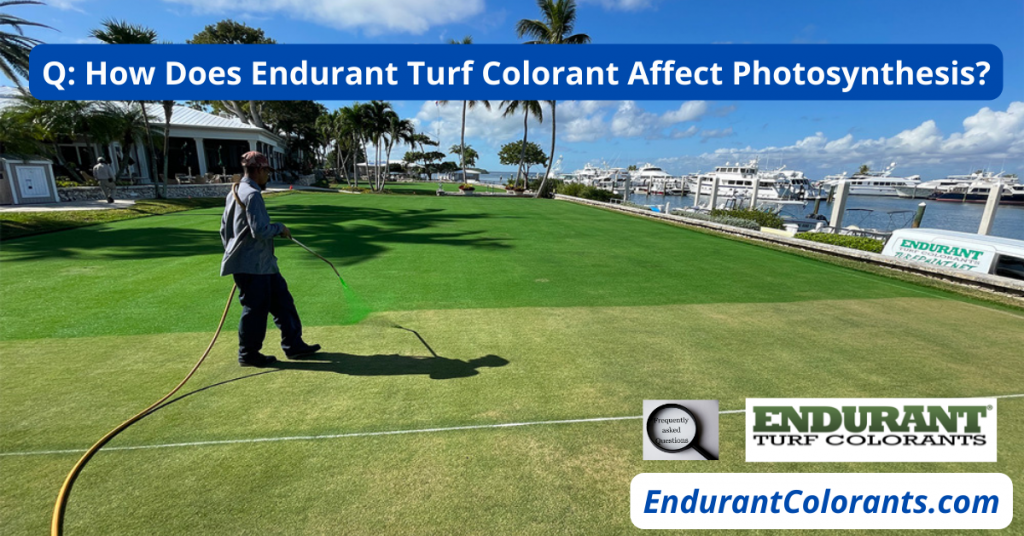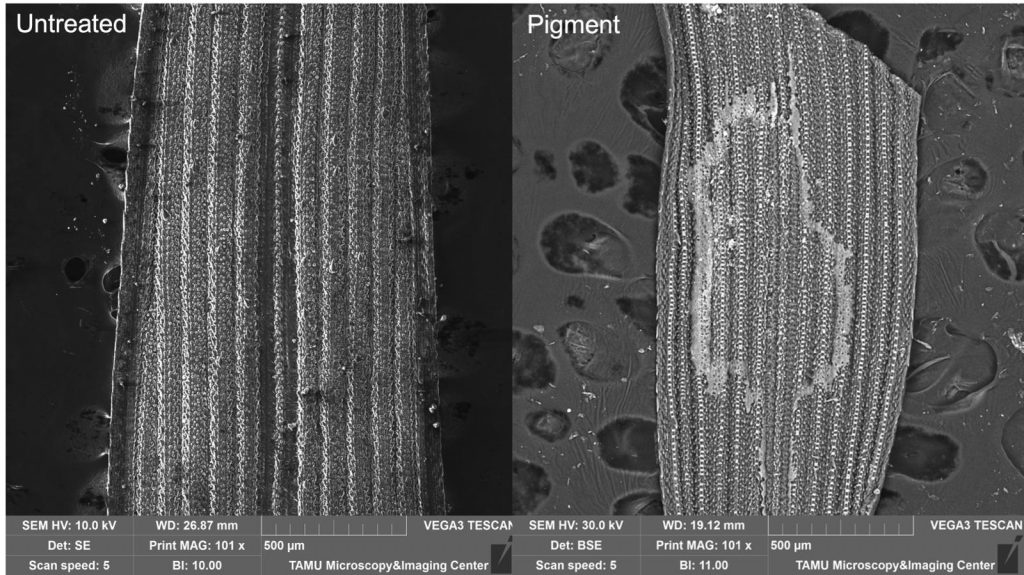Does Grass Paint Affect Photosynthesis?
Endurant Turf Colorants, including the pigments and the paints, do not adversely affect the process of photosynthesis. Photosynthesis is the process of the plant absorbing sunlight, water and carbon dioxide, creating energy and oxygen.

Many of our Endurant Turf Colorant clients are not scientists. They want to know if Endurant will make the grass look great and that it won't kill it. For them, we assure you, will get great results using as directed.
However, many of our other colorant clients are scientists and agronomists. They know how plants and chemistry work and they have serious questions. One of those common questions is: Does grass paint prevent or affect photosynthesis? In the case of Endurant, no, not according to results in the field. A couple studies have shown Endurant pigments' effects on photosynthesis are minimal in some lab tests. Endurant provides ultra-concentrated paints that one study showed had more affect on photosynthesis in the lab, but has had very little in the field.
Our Endurant Turf Colorant expert Brad Driggers addressed this question this week, saying: "Endurant Turf Colorants do not create a film on the leaf blade. Colorants do not negatively affect photosynthesis, respiration and sunlight."
Also, this is true whether in our pigments, paints or ultra-concentrates. The effects of each are slight and they vary with more effects reported in the higher concentrations.
Importantly, Endurant Turf Colorants do not harm grass. In fact, they have few agronomic effects on the plant with details to follow here.
Studies of Grass Paint and Photosynthesis
First, a North Carolina State University study reported no photosynthesis affect from Endurant pigment.
Another study shows colorants of various brands have modest influence on photosynthesis with the higher concentrated paints having more affect than a pigment or indicator dye. These latter colorants and pigments provide little color and no lasting color due to the lack of resin, or binder.
For an extended refresher on photosynthesis, here is the Wikipedia version of photosynthesis.
Shop Endurant here.
North Carolina State University Study
Casey Reynolds, of North Carolina State University and executive director at Turfgrass Producers International, found no negative influence on the plant. Note, this is not true of all other brands and varieties of turf colorants and marking paints. (The study shows how red paints have a different effect than other colors and so forth.)
According to published reports of the study:
This image from university research is a common turf colorant applied at normal rates analyzed under a scanning electron microscope for coverage and entry into the leaf. It shows these products contain organic pigments that do not clog stomata nor enter the leaf. They have been used for many years in sports applications and there has been no anecdotal or research evidence to suggest they negatively impact soil microbes, or plant or soil respiration. To the contrary, research shows that they increase soil and plant canopy temperatures in the spring which actually increases soil microbial activity and plant metabolic activity.
North Carolina State University, Casey Reynolds, 2013

Find a full North Carolina State University report by Reynolds here.
Endurant and Springtime Greenup:
Endurant Grass Paints and Photosynthesis
As reported above, one popular effect of Endurant colorants related to chlorophyll is earlier spring time green up, according to some agronomists. Endurant led grass out of winter dormancy a little earlier, they report. The darker color of the leaf blade attracts just enough heat to cause the photosynthesis to occur earlier in spring. The chlorophyll and plant color returns a bit sooner.
For many, this would be a subtle effect. For the turfgrass professionals, such as golf course superintendents, any edge is useful to get green grass and optimal transitions. When dealing with changes in turfgrass growing stages, seasons and species, transition challenges abound. So, if there is an effect of colorants on chlorophyll production, it's modest but beneficial, they report.
More Science Behind Grass Paints and Photosynthesis
While many agronomists have reported seeing earlier springtime greenup using colorants, not all have experienced that effect. Dark green colorants accentuate the theory and results. Endurant Fairway and custom blends with added black have the most influence. In these cases, there was a modest increase in soil temperature. Thus, the turfgrass began producing its own chlorophyll a bit earlier than turfgrasss not treated with Endurant.
Several studies since 2010 on Endurant have produced interesting results in this regard. University of Kansas did a study on a couple products, including Endurant and glyphosate. Geoponics, the makers of Endurant, does not include glyphosate in any of our products. However, our customers do commonly use glyphosate as herbicide. This is especially used in the process of overseed and transitioning. This study was related to Endurant as used instead of or in combination with overseed. Here is one of several relevant excerpts:
"Turfgrass colorant applications have resulted in increased turf-grass canopy and soil temperatures, increasing plant metabolism," according to the report.
Jared Hoyle and Jacob Reeves wrote this on October 19, 2017, and it was published by the International Turfgrass Society.
Read the full report from the University of Kansas study of Endurant and other products here.
Another Study on Turf Colorants and Photosynthesis
Scientists tested colorants for their effects on photosynthesis and UV in yet another study that had slightly different results. Nearly all colorants provided some UV protection, which remains consistent. This is like sunscreen for plants.
Endurant protects the plant from cellular damage much the way a sunscreen protects human skin. This indicates Endurant colorants can be helpful to prevent heat stress.
Golf Course Magazine published an article with the findings of this study. The study leaders were Ben Wherley, an associate professor of turfgrass ecology at Texas A&M University; Manuel Chavarria, a research scientist at the Prairie Turfgrass Research Centre in Alberta; and again, Casey Reynolds, executive director of Turfgrass Producers International. (Read the full study here.)
Furthermore, researchers did not conduct this study in the field in natural sunlight, but rather in a lab. In this study, the more concentrated the colorant application rate, the more the affect on photosynthesis. Endurant Premium was applied at a more concentrated rate, per the bottle instructions, than Endurant TE and other brands' indicator dyes, for example. Despite showing some effect on photosynthesis in the lab, Endurant provides rich, lasting color and a nearly negligible effect on plant growth.
In conclusion, Endurant provides more actual colorant, plus UV protection, without significant decline in photosynthesis.
MORE FAQs About Endurant Turf Colorants
See our other FAQ's and enter other questions you have. Can't find the answer to your question? Then, contact us. Email GeoAdmin@geoponicscorp.com